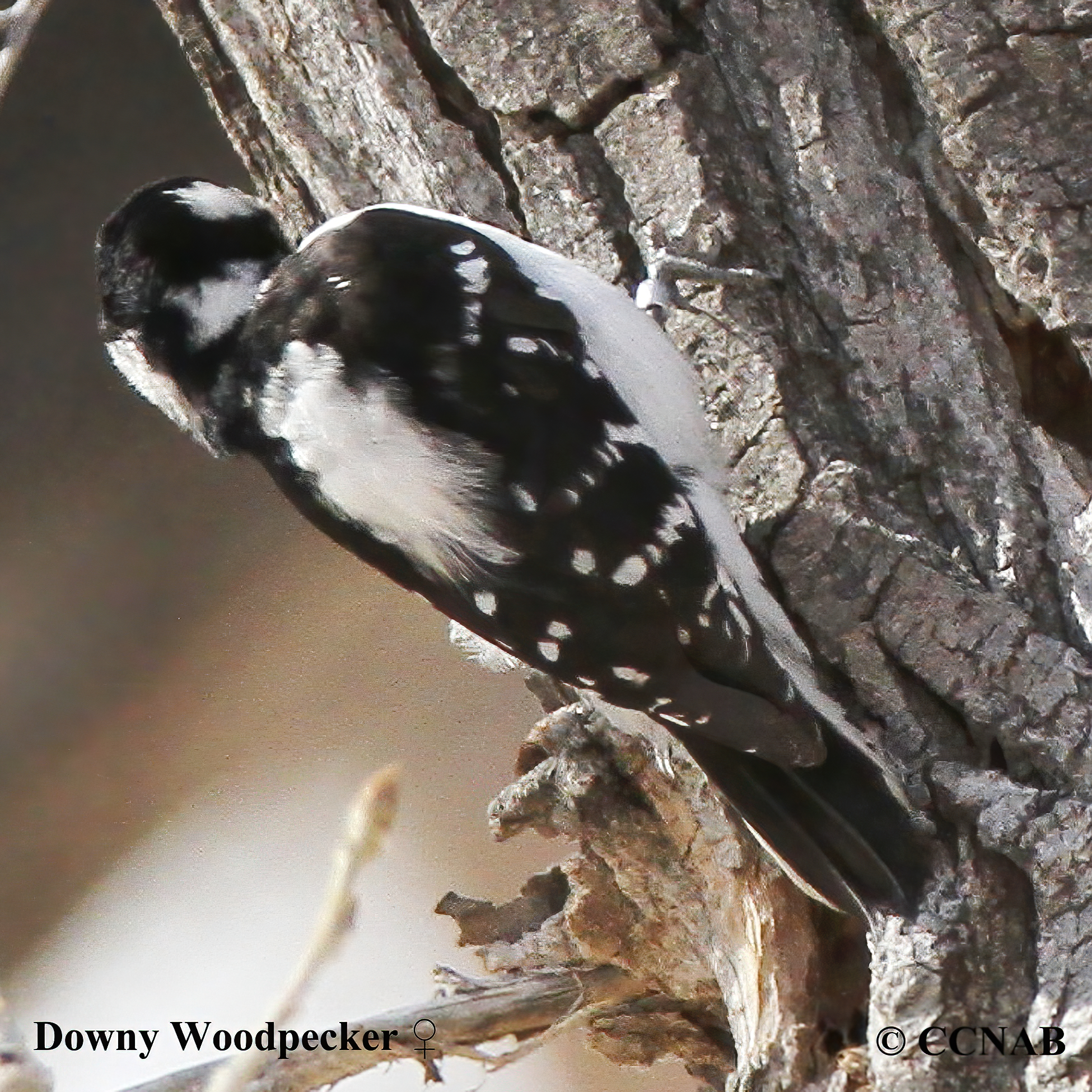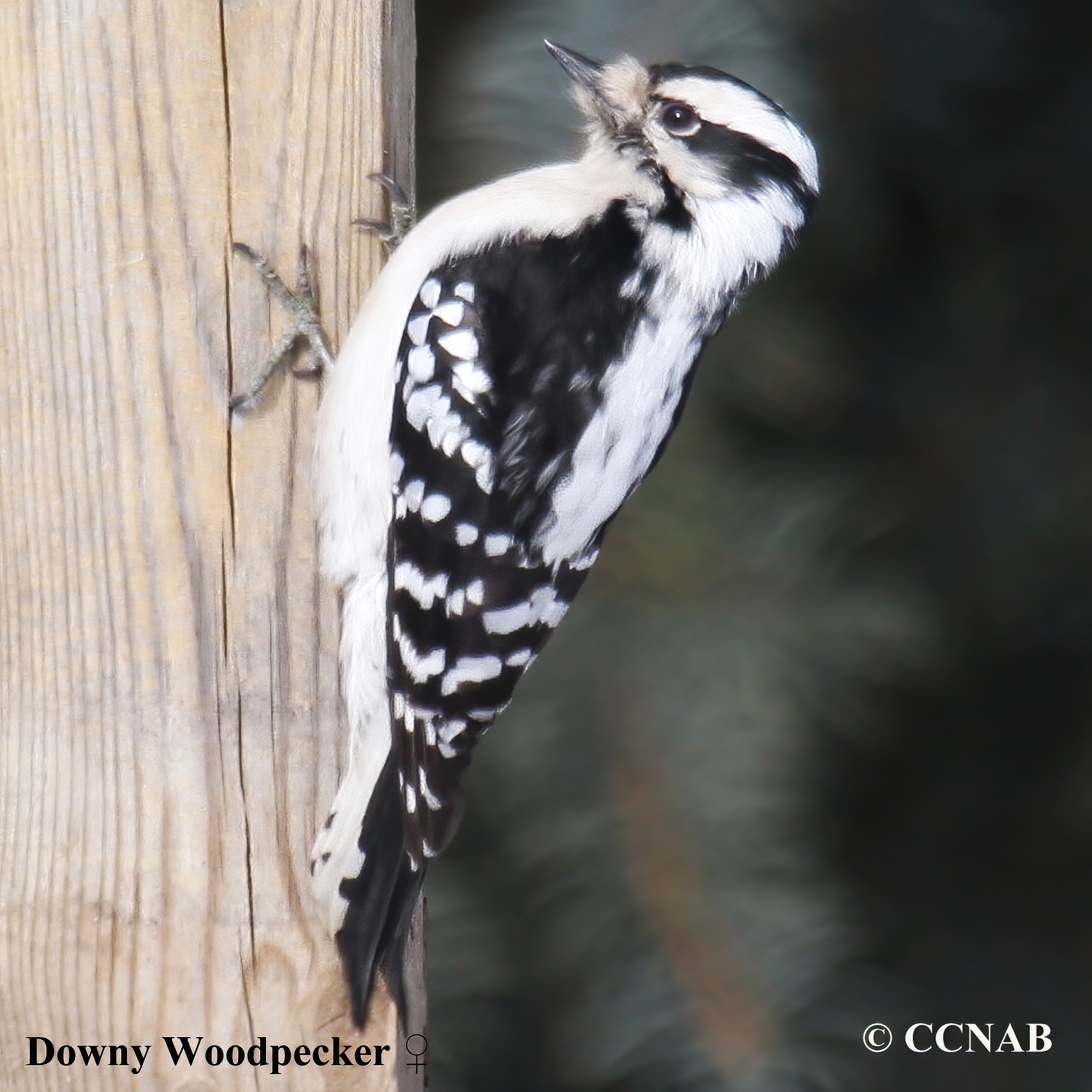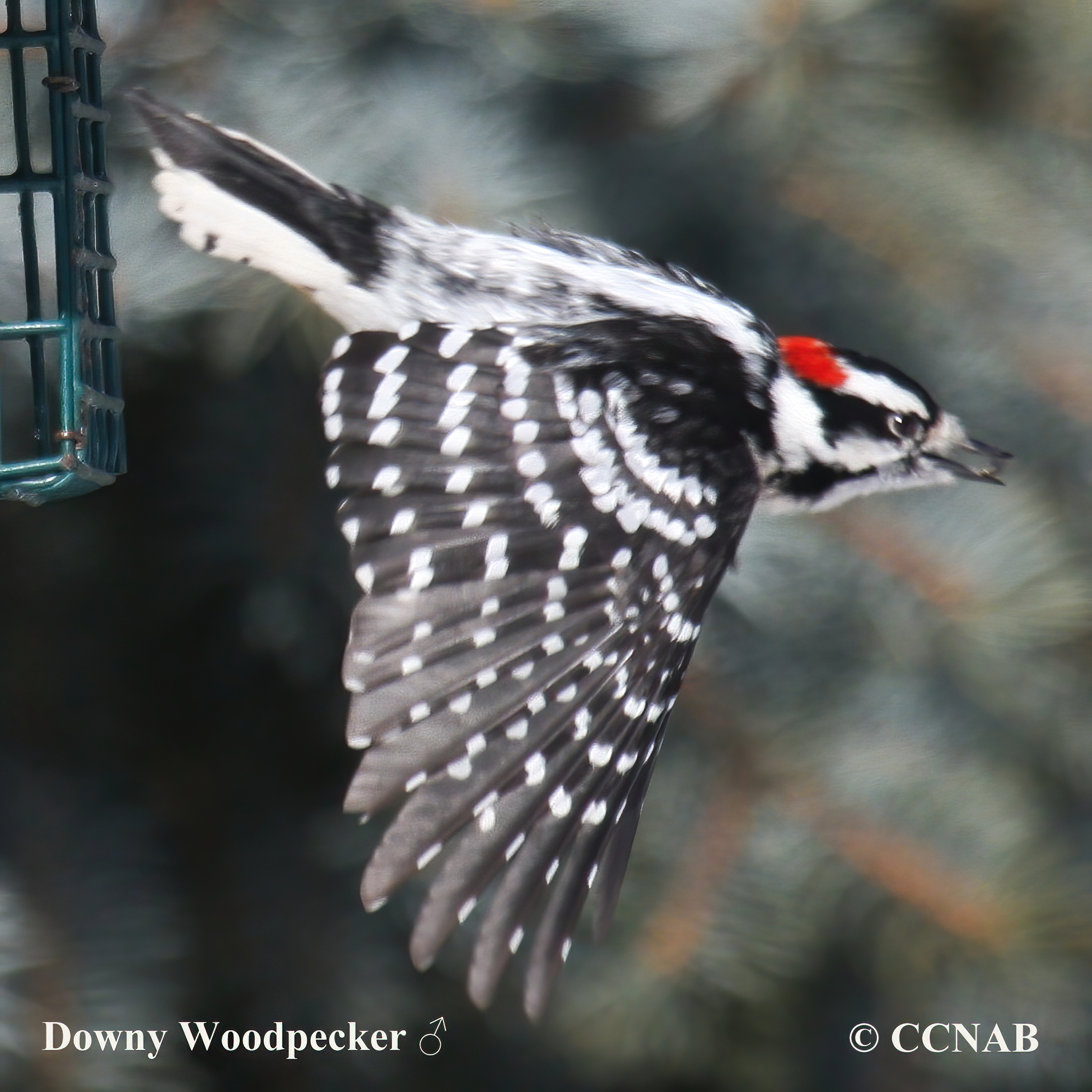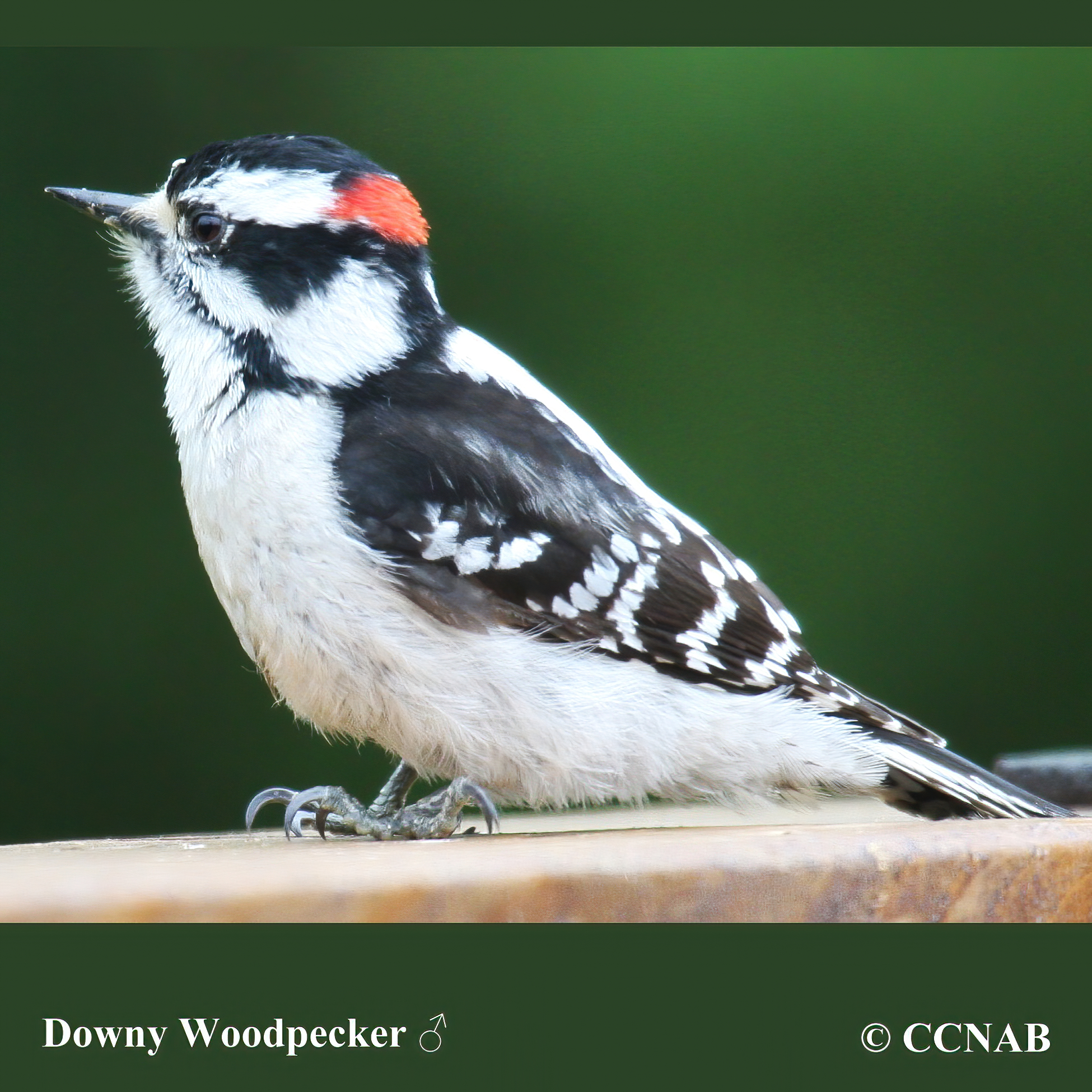North American Bird Search Box
This search box can be used to find bird species using bird's english, french or latin name, or to identify bird by its 4 letter Alpha Code
Field Guide for all the Birds of North America
Downy Woodpecker
4 Letter (english names) Alpha Code: DOWO (1)
Pic mineur
Dryobates pubescens
Information, images and range maps on over 1,000 birds of North America, including sub-species, vagrants, introduced birds and possibilities
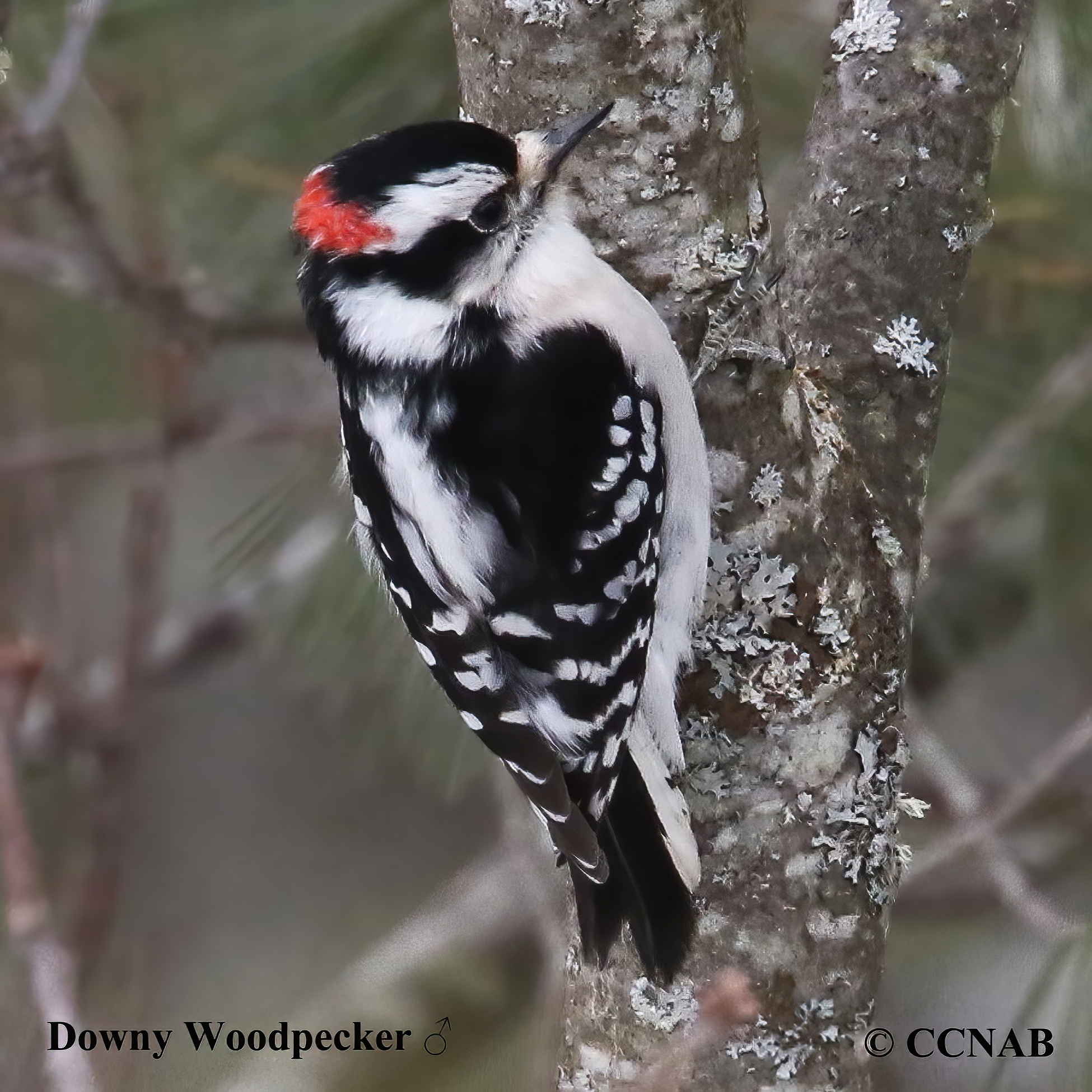
Species: The Downy Woodpecker (Dryobates pubescens) is the smallest woodpecker seen in eastern North America. This black and white bird is seen over most of the continent. Although it does not necessarily migrate, it is known to move to more adaptable regions where the climate may not be as harsh. In the winter months, this woodpecker can be seen around active bird feeders where there is suet or black-oiled sunflower seeds to be had.
Distinctions: The male and female are similar in appearance, except for a red occipital patch seen on the back of the crown of the male. Both birds have bold superciliums above their eyes, large white areas from their nape to the tail feathers. Most have large white spots on their wings but not always. They have black spots on the outer white tail feathers.
Voice: Single call notes, sounding like "pik", rapid lyric-type chattering, and rapid drumming using branch stubs, utility poles and even metal objects, to define their territories.
Nesting: Four to five white eggs, one to two broods per year, depending on different regions in North America. Birds peck out their nest to form cavities in trees, for their young and for their own nighttime roosting quarters.
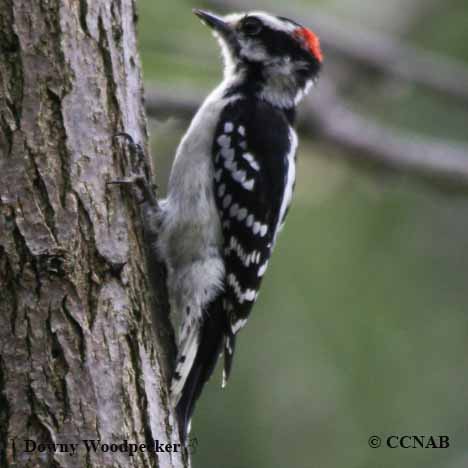
Life, Habitat & Pictures of North American Woodpeckers
| B L | W W | W | Family | Latin Name |
|---|---|---|---|---|
| 6.75" 17.1cm | 12" 30.5cm | 0.95oz 26.9g | Picidae | Dryobates pubescens |
North American Birds Videos
- Click here - Male
- Click here - Male
- Click here - Female
- Click here - Back view of male
- Click here - Back view of female
North American Bird Calls
- Click here
- Summer
- Year Around
- Winter
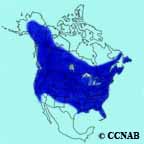
Distribution: Found throughout forests, parks, woodlots and towns. It is a common sight around birdfeeders during the winter months in the northern regions. It is seen from Newfoundland and Labrador to northern Alaska, down into California and across to Florida. It is not seen along the Rio Grande as it prefers a cooler and wetter climate.
Reference to Other Bird Site:
ABA - American Birding Association This site represents an organization that maintains official records of all birds species that have been proven to have been seen inside the perimeters of the North American Continent and the surrounding bodies of water. Regular revised versions are posted to keep the bird list current at all times. This is the list used by all serious birders over their lifetime. You may be aware of the movie called the "Big Year". It was with this list that all the competing birders used in an attempt to set a new record as to how many bird species that could be seen by an individual birder in one calendar year.
